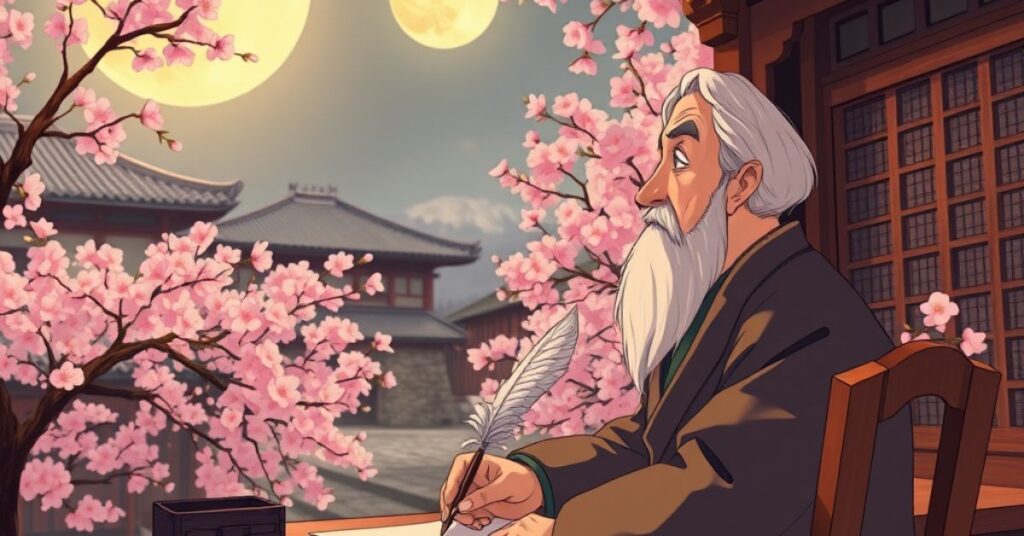In Japanese culture, the phrase “The moon is beautiful, isn’t it?” (月が綺麗ですね, tsuki ga kirei desu ne) is more than just a poetic observation; it’s a profound expression of love and affection. This seemingly simple statement encapsulates the feelings one has for another, often used as an indirect way to convey romantic sentiments. But why is this phrase so significant, and what lies beneath its surface?
The Hidden Meaning Behind the Phrase
At first glance, the phrase appears to be a straightforward comment about the moon’s beauty. However, in the context of Japanese language and culture, it serves as an elegant metaphor for love.
The moon represents something beautiful and unattainable, much like the feelings one harbors for someone special. By expressing admiration for the moon, the speaker is subtly confessing their feelings without the need for directness, which is often preferred in Japanese communication.
Origins of the Phrase

The phrase is famously attributed to the renowned Japanese author Natsume Sōseki, who purportedly advised that “the moon is beautiful, isn’t it?” could be used as a romantic expression in his novel I Am a Cat. Sōseki’s influence on the Japanese literary landscape is immense, and this phrase has endured as an emblem of romantic expression, showcasing the beauty of indirect communication.
Cultural Importance of the Moon in Japan
The moon holds a revered place in Japanese culture, symbolizing beauty, tranquility, and the passage of time. Festivals like Tsukimi celebrate the harvest moon, where families gather to admire the moonlight and offer rice dumplings as a tribute. This cultural appreciation adds layers of meaning to the phrase, connecting personal feelings with a broader cultural significance.
Why the Moon?
Why not express love directly? In Japanese culture, direct expressions of emotion can be seen as too forward or even rude. The moon, with its serene and distant beauty, provides a perfect backdrop for subtlety. It allows individuals to express profound feelings without the weight of explicit declarations, making it a beautiful tool for romantic communication.
The Power of Subtlety in the Japanese Language
Subtlety is a hallmark of Japanese communication. The phrase “The moon is beautiful, isn’t it?” exemplifies this art of indirectness. It encourages listeners to read between the lines, fostering a deeper connection through shared understanding. This cultural nuance invites a richer emotional exchange, where feelings are often implied rather than stated outright.
Natsume Sōseki’s Influence on Modern Language
Sōseki’s work has left a lasting impact on contemporary Japanese language and literature. The phrase continues to resonate, showing how literary expressions can transcend time and remain relevant. In modern Japan, it’s not uncommon for young people to use this phrase in romantic contexts, reflecting Sōseki’s enduring legacy in the realm of love and language.
The Phrase in Contemporary Japan
In today’s society, the phrase has found its way into casual conversations, text messages, and even social media posts. Young couples often use it to convey affection in a playful yet meaningful way. Its nostalgic charm adds to its appeal, making it a favorite among those who appreciate the beauty of language.
Other Japanese Phrases of Endearment
Japanese is rich with expressions of affection, such as “I love you” (愛してる, aishiteru) or “You are precious” (大切な人, taisetsu na hito). However, these phrases can come across as too direct. The beauty of “The moon is beautiful, isn’t it?” lies in its subtlety, allowing for a softer approach to expressing love.
Comparing Love Phrases in Different Cultures
When compared to expressions of love in other cultures, Japanese indirectness stands out. For instance, in English, one might say “I love you” straightforwardly, whereas in other languages, such as French or Spanish, there are equally poetic ways to express affection. Each language has its unique style, but the charm of subtlety in Japanese offers a fascinating contrast.
How to Use “The Moon is Beautiful, Isn’t It?” in Conversation?
Using this phrase effectively requires a touch of timing and context. It’s best suited for moments of intimacy or shared experiences, like watching a beautiful night sky. You might say it while on a quiet evening stroll, allowing the romantic atmosphere to enhance the message. A simple glance at the moon can be enough to evoke the sentiment.
The Phrase in Popular Culture
The phrase has made its mark in various forms of Japanese media, from literature to anime and film. It serves as a motif in romantic narratives, reminding audiences of the beauty of unspoken feelings. Its presence in popular culture helps to keep the tradition alive, inspiring new generations to appreciate the language’s subtleties.
Learning the Art of Indirect Communication
For those learning Japanese, mastering the art of indirect communication is crucial. Understanding phrases like “The moon is beautiful, isn’t it?” equips learners with the cultural context needed to communicate effectively and authentically. It’s not just about language; it’s about connecting with the culture and emotions behind the words.
Conclusion
In conclusion, “The moon is beautiful, isn’t it?” is a delightful expression that encapsulates the essence of love in Japanese culture. Its rich history and poetic subtleties invite us to explore the deeper meanings behind our words. Have you ever used this phrase or a similar one in your conversations? Share your experiences and favorite romantic expressions, and let’s celebrate the beauty of language together!

Emily Rose Johnson is a passionate writer with a knack for crafting engaging content. She specializes in communication strategies, digital marketing, and creative storytelling.









